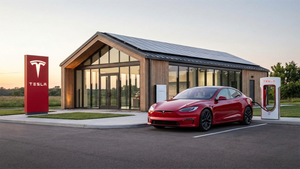 Photo from Unsplash
Photo from Unsplash
Originally Posted On: https://aakmodesto.com/the-ultimate-guide-to-choosing-the-right-cabinets-for-your-kitchen-remodel/
When remodeling your kitchen, one of the most important decisions you will make is choosing the right cabinets. With so many cabinet styles, materials, colors, and hardware options, making the right choice for your kitchen space can feel overwhelming.
In this blog post, our kitchen remodeling experts from %COMPANY% will demystify the cabinetry remodeling process and provide tips and insights to help you choose the right storage options for your kitchen renovation.
Understanding Your Kitchen’s Cabinetry Needs
Before you even start looking at cabinet options, it’s important to understand your kitchen’s storage requirements.
Assessing Your Space
Start by taking precise measurements of your kitchen space. Measure the width, depth, and height of the area where your cabinets will be placed, making sure to note any irregularities or obstructions like pipes or columns.
Additionally, consider the current layout of your kitchen and how new cabinets might enhance or detract from the flow of the space. This might go along with thinking about whether removing walls or adjusting the existing layout could create a more functional and aesthetically pleasing kitchen.
Functionality First
To design a kitchen that’s as functional as it is beautiful, it’s important to prioritize your storage needs, working space, and appliance placements. Evaluate your cooking habits and storage requirements to determine the kind of cabinetry that will best serve you.
For example:
- Consider having cabinets that store smaller dry ingredients near the counter where you prepare food.
- Consider whether a larger pantry would be best placed further away from the food prep area to reduce traffic.
- Consider pot-and-pan storage next to the stove for easy access.
- Consider custom cabinetry for storing certain types of dishes or glassware.
Also, consider the placement of your appliances and how your cabinets will accommodate them. Ensure there is enough space to house your refrigerator, stove, and dishwasher without impeding the kitchen’s flow.
Aesthetic Goals
Consider cabinets with sleek, minimalist lines and handleless doors if your home embraces a modern aesthetic. For a traditional kitchen, cabinets with raised panel doors and detailed moldings might be more appropriate. Look into finishes and materials that align with your style—varnished wood for warmth, glossy laminates for a contemporary vibe, or matte finishes for a touch of sophistication.
Remember to balance color and texture! Contrasting tones can create a dynamic space, while a monochromatic palette often enhances the sense of harmony and spaciousness.
The Different Cabinet Types and Materials
Once you’ve determined what you want to achieve functionally and aesthetically, it’s time to choose the type of cabinet that will suit your needs.
Stock, Semi-Custom, and Custom Cabinets
There are three main types of cabinets: stock, semi-custom, and custom. Each offers its own benefits and drawbacks.
Stock Cabinets
Stock cabinets are pre-made in standard sizes and styles, making them the most affordable option. These cupboards are mass-produced and readily available at home improvement stores in a limited range of finishes and materials.
The downside to stock cabinets is that they may not fit perfectly into your kitchen’s dimensions, leading to awkward gaps and wasted space.
Semi-Custom Cabinets
Semi-custom cabinets offer more flexibility in sizing and design compared to stock cabinets. They’re partially pre-made but can be modified with added features like pull-out shelves or built-in organizers. This option allows for a more personalized look while still being relatively budget-friendly.
Custom Cabinets
Custom cabinets are built to your required specifications and offer the most design options. They can be tailored to fit any space, including irregular or unique layouts. However, they come with a higher price tag and longer lead times, as each cabinet is made from scratch.
Materials for Cabinets
When selecting materials for your cabinets, consider durability, maintenance, and aesthetics. Here’s an overview of common materials:
Wood
Wood is a timeless option offering durability and a warm, natural aesthetic. Common choices include oak, maple, cherry, and hickory, each with its own grain pattern and coloration. However, wood may require more maintenance to protect against moisture and scratching.
Laminates
Laminates are made with multiple layers of synthetic materials, often with a printed layer that mimics the look of wood or other finishes. They’re moisture-resistant and easy to clean, making them a practical and cost-effective choice. However, they may suffer aesthetically compared to the natural material.
Metal
Metal cabinets provide a modern look and are often found in stainless steel, aluminum, or copper finishes. They’re durable, easy to clean, and resistant to stains and corrosion, though they can be prone to denting and showing fingerprints.
Glass
Glass-fronted cabinets can showcase fine china or glassware and help create a sense of openness in the kitchen. Glass can be clear, frosted, or textured and is typically used with wood or metal frames. While elegant, glass requires regular cleaning to maintain its clarity and can be fragile.
How to Budget for Kitchen Cabinets?
Several factors influence the cost of kitchen cabinets, including materials, construction style, quality, size, and additional features. Here are some tips to help you budget for your new cabinets:
- Determine your budget: First, determine how much you’re willing to spend on your cabinets. This will help narrow your options and prevent overspending.
- Consider the size of your kitchen: Larger kitchens may require more cabinets, which can increase the overall cost. Take accurate measurements and ask multiple contractors for an estimate.
- Choose materials wisely: As mentioned earlier, different materials come with different price tags. While it may be tempting to opt for cheaper options, remember that durability and quality should also be considered.
- Decide on construction style: Cabinets can be made in one of two ways: framed or frameless. Framed cabinets have a face frame around the front edges, while frameless cabinets do not. Frameless cabinets tend to be more expensive but offer a more modern look.
- Consider additional features: Features like soft-close hinges, pull-out shelves, and custom inserts can add to the overall cost of your cabinets. Decide which features are important to you and fit within your budget.
- Keep installation costs in mind: The installation cost should also be factored into your budget. If you hire a contractor, get a quote for both materials and labor.
Make the Most of Your Kitchen Remodel With the Perfect Cabinet
A lot goes into finding the perfect cabinets for your kitchen remodel. From materials and construction style to size and additional features, it’s important to consider all aspects when budgeting for your new cabinets.
To ensure you get your dream kitchen within your budget, working with a kitchen remodeling professional who can guide you through the process and provide accurate estimates is best.
Speak With a Kitchen Remodeling Professional Today
If you’re ready to start your kitchen remodel, %COMPANY% is the expert to turn to. We can help you design and install the perfect cabinets for your budget and style. Contact us today at %PHONE1% to schedule a consultation and start planning your dream kitchen!




